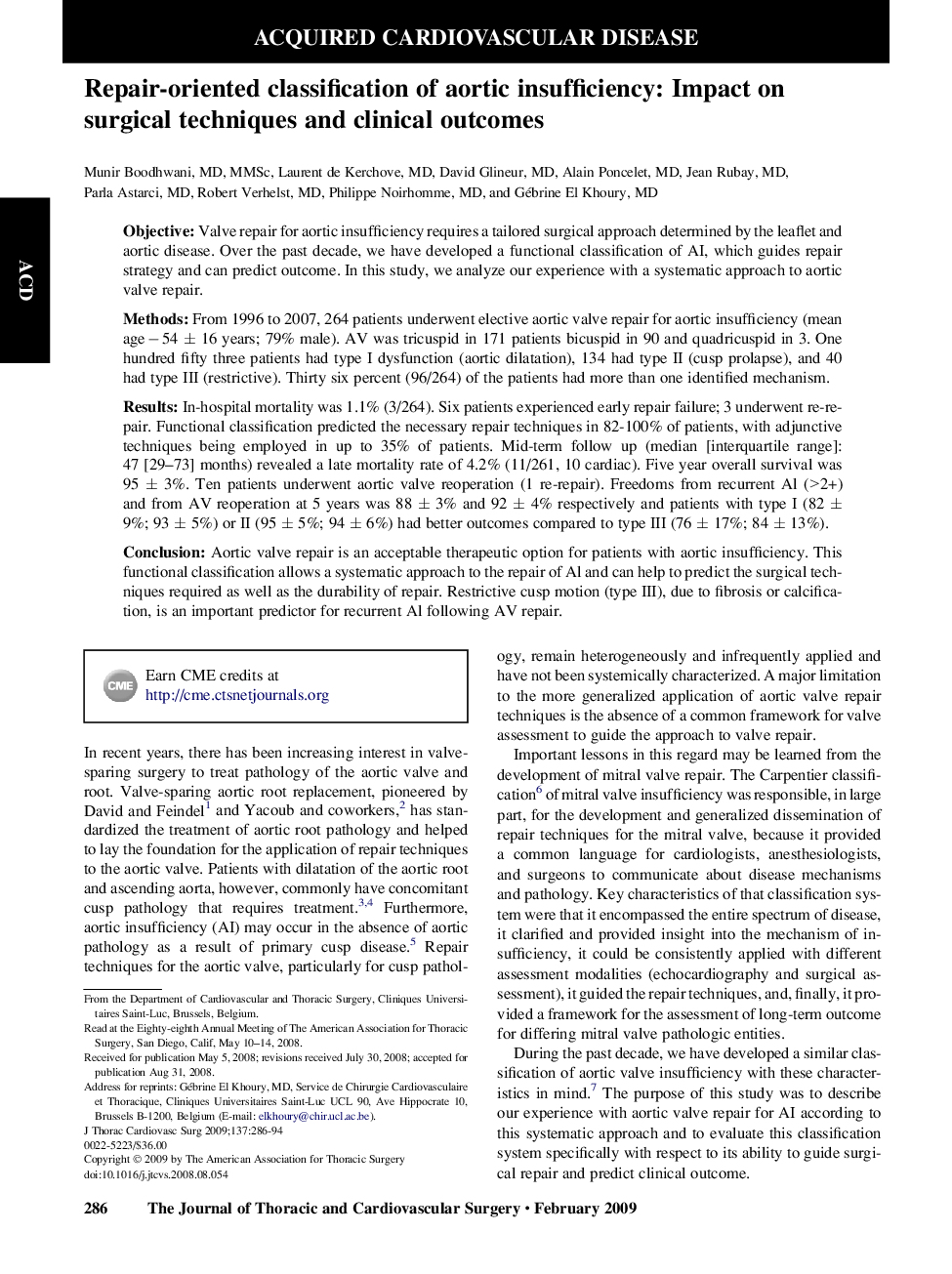| Article ID | Journal | Published Year | Pages | File Type |
|---|---|---|---|---|
| 2985728 | The Journal of Thoracic and Cardiovascular Surgery | 2009 | 9 Pages |
ObjectiveValve repair for aortic insufficiency requires a tailored surgical approach determined by the leaflet and aortic disease. Over the past decade, we have developed a functional classification of AI, which guides repair strategy and can predict outcome. In this study, we analyze our experience with a systematic approach to aortic valve repair.MethodsFrom 1996 to 2007, 264 patients underwent elective aortic valve repair for aortic insufficiency (mean age − 54 ± 16 years; 79% male). AV was tricuspid in 171 patients bicuspid in 90 and quadricuspid in 3. One hundred fifty three patients had type I dysfunction (aortic dilatation), 134 had type II (cusp prolapse), and 40 had type III (restrictive). Thirty six percent (96/264) of the patients had more than one identified mechanism.ResultsIn-hospital mortality was 1.1% (3/264). Six patients experienced early repair failure; 3 underwent re-repair. Functional classification predicted the necessary repair techniques in 82-100% of patients, with adjunctive techniques being employed in up to 35% of patients. Mid-term follow up (median [interquartile range]: 47 [29–73] months) revealed a late mortality rate of 4.2% (11/261, 10 cardiac). Five year overall survival was 95 ± 3%. Ten patients underwent aortic valve reoperation (1 re-repair). Freedoms from recurrent Al (>2+) and from AV reoperation at 5 years was 88 ± 3% and 92 ± 4% respectively and patients with type I (82 ± 9%; 93 ± 5%) or II (95 ± 5%; 94 ± 6%) had better outcomes compared to type III (76 ± 17%; 84 ± 13%).ConclusionAortic valve repair is an acceptable therapeutic option for patients with aortic insufficiency. This functional classification allows a systematic approach to the repair of Al and can help to predict the surgical techniques required as well as the durability of repair. Restrictive cusp motion (type III), due to fibrosis or calcification, is an important predictor for recurrent Al following AV repair.
